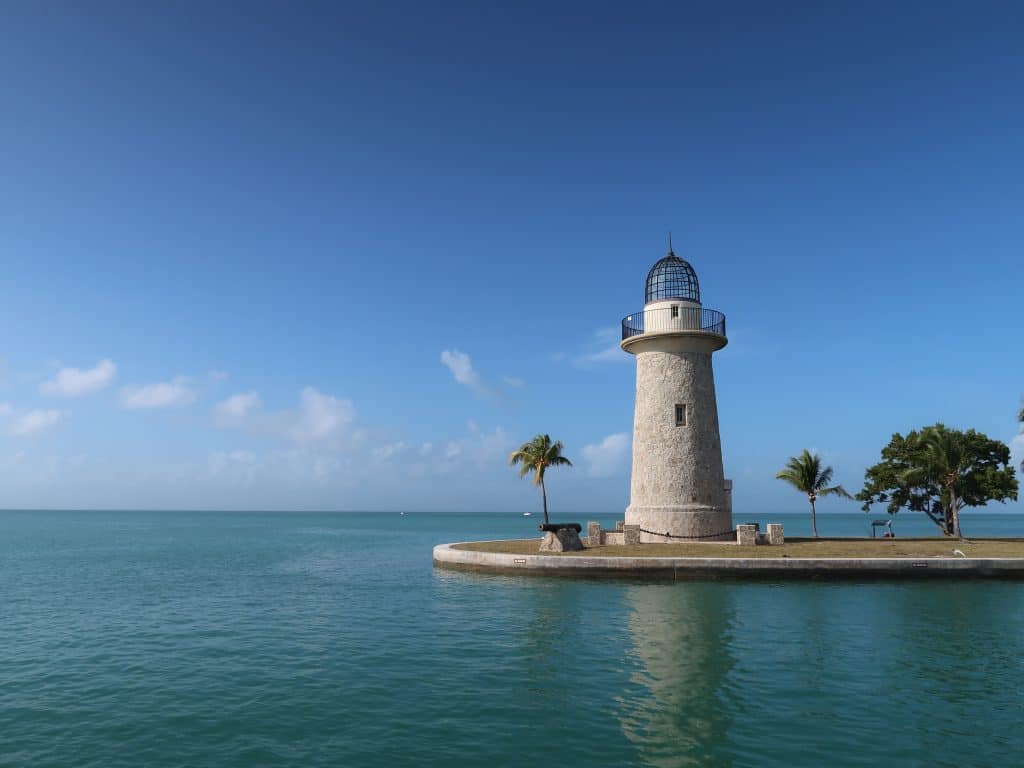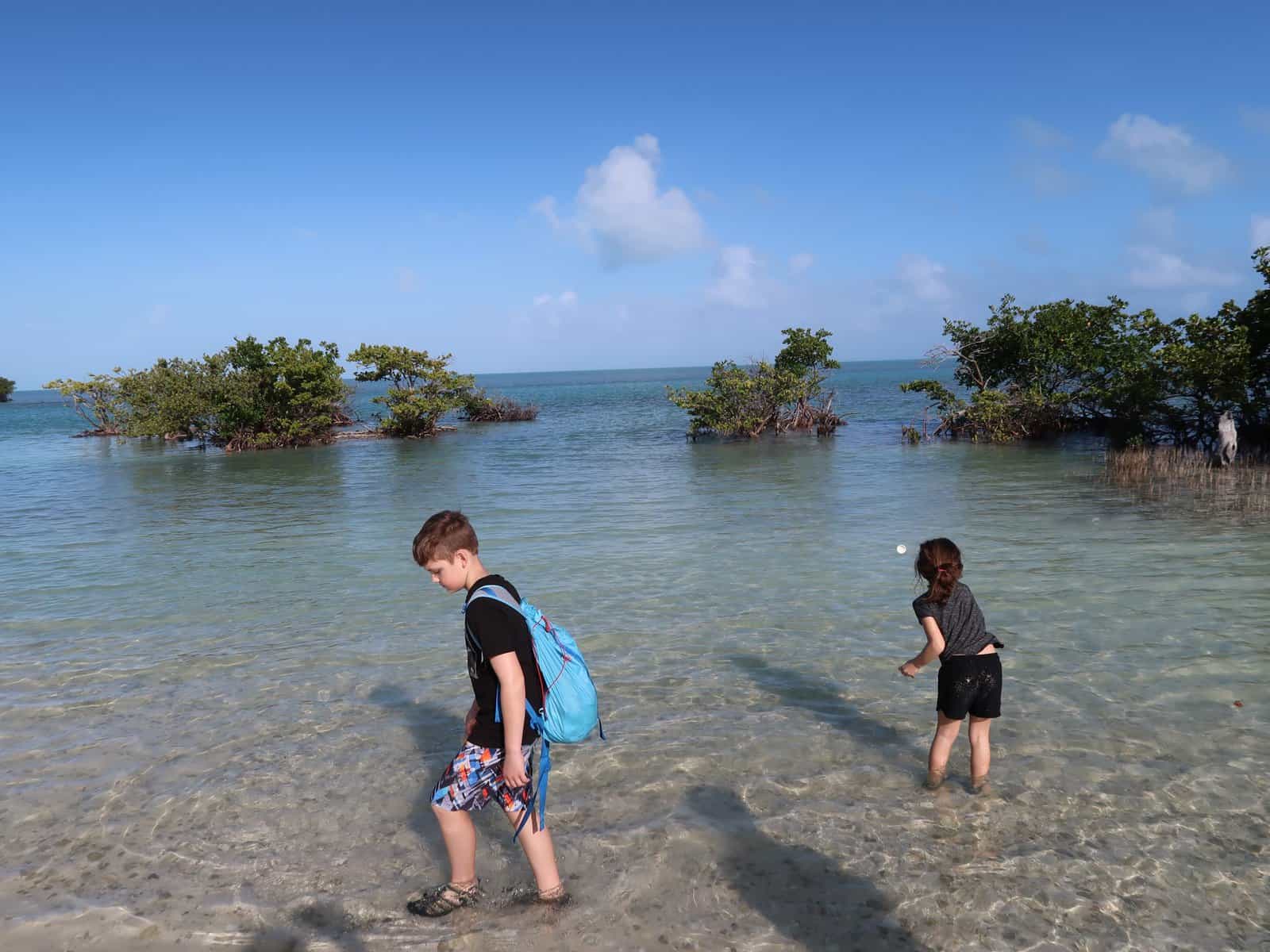Biscayne National Park is a hidden gem located just a few miles from downtown Miami. This park is home to a unique ecosystem that includes mangroves, coral reefs, seagrass beds, and abundant marine life.
Biscayne National Park was established in 1980 and covers more than 172,000 acres, making it the largest marine park in the National Park System. In this guide, we will explore the wonders of Biscayne National Park, including its mangroves, reefs, and marine life.
Mangroves
Mangroves are trees and shrubs that grow in coastal intertidal zones, where land and sea meet. These unique plants have adapted to survive in saltwater environments, making them an important part of Biscayne Bay’s ecosystem. Mangroves play a crucial role in protecting the coast from erosion and storms, filtering pollutants, and providing habitat for a variety of marine life.
Biscayne National Park is home to four species of mangroves: red mangroves, black mangroves, white mangroves, and buttonwood trees. Red mangroves are the most abundant and are easily recognized by their distinctive prop roots that arch above the waterline. Black mangroves have pneumatophores, which are root-like projections that grow above the waterline to help the plant absorb oxygen. White mangroves have no visible roots above the waterline, and buttonwood trees are often found growing alongside mangroves in intertidal zones.

Mangroves can be found in several areas of Biscayne National Park:
- Convoy Point: This is the park’s main visitor center and is located on the mainland. It has a boardwalk that leads through a mangrove forest and offers excellent views of the mangroves.
- Boca Chita Key: This is one of the larger keys in the park and has a small harbor with mangroves growing along the shoreline. The photo above was taken at this location.
- Elliott Key: This is the largest key in the park and has several hiking trails that pass through mangrove forests.
- Adams Key: This key has a small mangrove forest that can be explored by kayak or canoe.
Mangroves in Florida are facing a range of threats, and some populations are in danger. There are several factors threatening these species.
Rising sea levels and increasing temperatures are affecting the growth and health of their forests. As sea levels rise, saltwater intrusion can damage the roots of mangroves, and warmer temperatures can affect their ability to photosynthesize.
Another factor contributing to their decline is the development along the Florida coast. Coastal development is removing mangrove habitats and altering natural water flows which affects the health of mangrove forests.
Mangrove populations are also threatened by pollution, invasive species, and hurricanes. Agricultural runoff and other sources can harm mangroves and their associated ecosystems. The Brazilian pepper and the Australian pine, both invasive, compete with mangroves for resources and space. Finally, just as other species are harmed by hurricanes, so are mangroves.
Efforts are being made to protect and restore these important trees. Restoration projects aim to replant lost or damaged mangrove forests, and policies are being put in place to regulate coastal development and protect natural habitats. However, more action may be needed to ensure the long-term survival of these important ecosystems.
Reefs
Biscayne National Park is home to the northernmost coral reef in the continental United States. This reef system spans more than 20 miles and is home to over 200 species of fish, 45 species of stony coral, and a variety of sponges, sea fans, and other invertebrates. The coral reefs in Biscayne National Park are part of the Florida Reef Tract, which stretches more than 350 miles from the Dry Tortugas to Palm Beach.
In addition to the coral reefs, Biscayne National Park is also home to several shipwrecks that have become artificial reefs. These shipwrecks provide habitat for a variety of marine life, including sea turtles, sharks, and colorful reef fish.
Some ways visitors can explore the park’s reefs include:
- Snorkeling: Visitors can rent snorkeling gear from local vendors or bring their own and take a boat tour to popular snorkeling spots such as the Maritime Heritage Trail or the Boca Chita Key Lighthouse.
- Scuba Diving: Visitors can take guided dives from local dive shops or arrange private tours.
- Glass-bottom Boat Tours: For those who don’t want to get in the water, glass-bottom boat tours are a great way to see the park’s reefs. These tours provide a unique view of the underwater world, and visitors can learn about the park’s marine life and ecosystems from knowledgeable guides.
It’s important to note that visitors should respect the park’s reefs and follow responsible snorkeling and diving practices to protect the fragile ecosystem. This includes not touching or standing on the coral, using reef-safe sunscreen, and properly disposing of any trash or waste.
Marine Life
Biscayne National Park is home to an incredible array of marine life, from tiny plankton to massive sharks. The park is home to more than 500 species of fish, including grouper, snapper, and tarpon. Visitors can also see sea turtles, dolphins, and manatees in the waters around the park.
In addition to the fish and marine mammals, Biscayne National Park is home to a variety of invertebrates, including lobsters, crabs, and shrimp. Visitors can also see colorful sponges, sea fans, and other invertebrates that make their homes on the coral reefs.
Biscayne National Park has implemented several conservation efforts to protect these species and their habitats. Examples include regulating boat access to sensitive areas, enforcing no-anchor zones, and educating visitors about responsible snorkeling and diving practices. Additionally, the park park has implemented a seagrass restoration program to replant lost or damaged seagrass beds and improve the health of these ecosystems.
The park conducts ongoing monitoring and research programs to track the health and populations of key marine species such as coral, sea turtles, and manatees. The park also offers educational programs and outreach events to raise awareness about marine life conservation and responsible boating and fishing practices. This includes working with local schools and community groups to promote marine conservation and sustainability.
There are several marine protected areas within Biscayne National Park which restrict fishing and other activities to protect important habitats and species. These protected areas include the Biscayne Bay Aquatic Preserves, the Maritime Heritage Trail, and the Jones Lagoon Research Natural Area. For more information on fishing within this park click HERE.
The rare and magnificent marine life of Biscayne National Park requires these conservation efforts in order to maintain their healthy and diverse populations. If you would like to participate in further conservation work on behalf of this park, view opportunities and organizations HERE at the park’s website.
Exploring Biscayne National Park

As you can see, Biscayne National Park is an amazing place to explore the beautiful ecosystem of south Florida. From the mangroves to the coral reefs, there is an abundance of marine life to discover and appreciate. With a little bit of planning and preparation, you can have a memorable experience in this unique park.
Read more to discover Biscayne’s exciting and evolving history!
If you’re looking for a place to connect with nature, learn about marine life, and have an adventure, make sure to add Biscayne National Park to your bucket list! Don’t forget to pack your snorkel gear and camera – you never know what you might see in these crystal clear waters.

